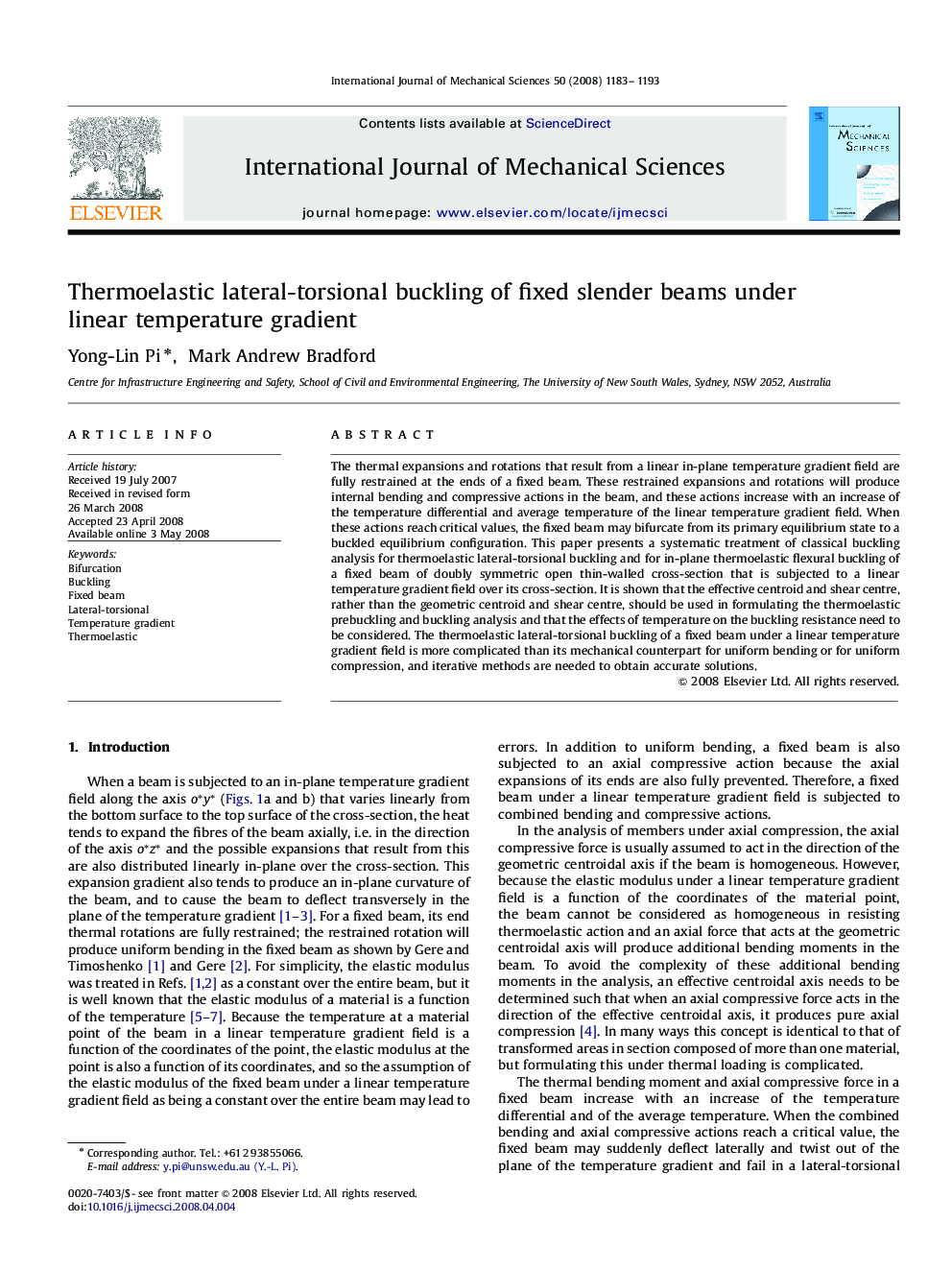| Article ID | Journal | Published Year | Pages | File Type |
|---|---|---|---|---|
| 780351 | International Journal of Mechanical Sciences | 2008 | 11 Pages |
The thermal expansions and rotations that result from a linear in-plane temperature gradient field are fully restrained at the ends of a fixed beam. These restrained expansions and rotations will produce internal bending and compressive actions in the beam, and these actions increase with an increase of the temperature differential and average temperature of the linear temperature gradient field. When these actions reach critical values, the fixed beam may bifurcate from its primary equilibrium state to a buckled equilibrium configuration. This paper presents a systematic treatment of classical buckling analysis for thermoelastic lateral-torsional buckling and for in-plane thermoelastic flexural buckling of a fixed beam of doubly symmetric open thin-walled cross-section that is subjected to a linear temperature gradient field over its cross-section. It is shown that the effective centroid and shear centre, rather than the geometric centroid and shear centre, should be used in formulating the thermoelastic prebuckling and buckling analysis and that the effects of temperature on the buckling resistance need to be considered. The thermoelastic lateral-torsional buckling of a fixed beam under a linear temperature gradient field is more complicated than its mechanical counterpart for uniform bending or for uniform compression, and iterative methods are needed to obtain accurate solutions.
